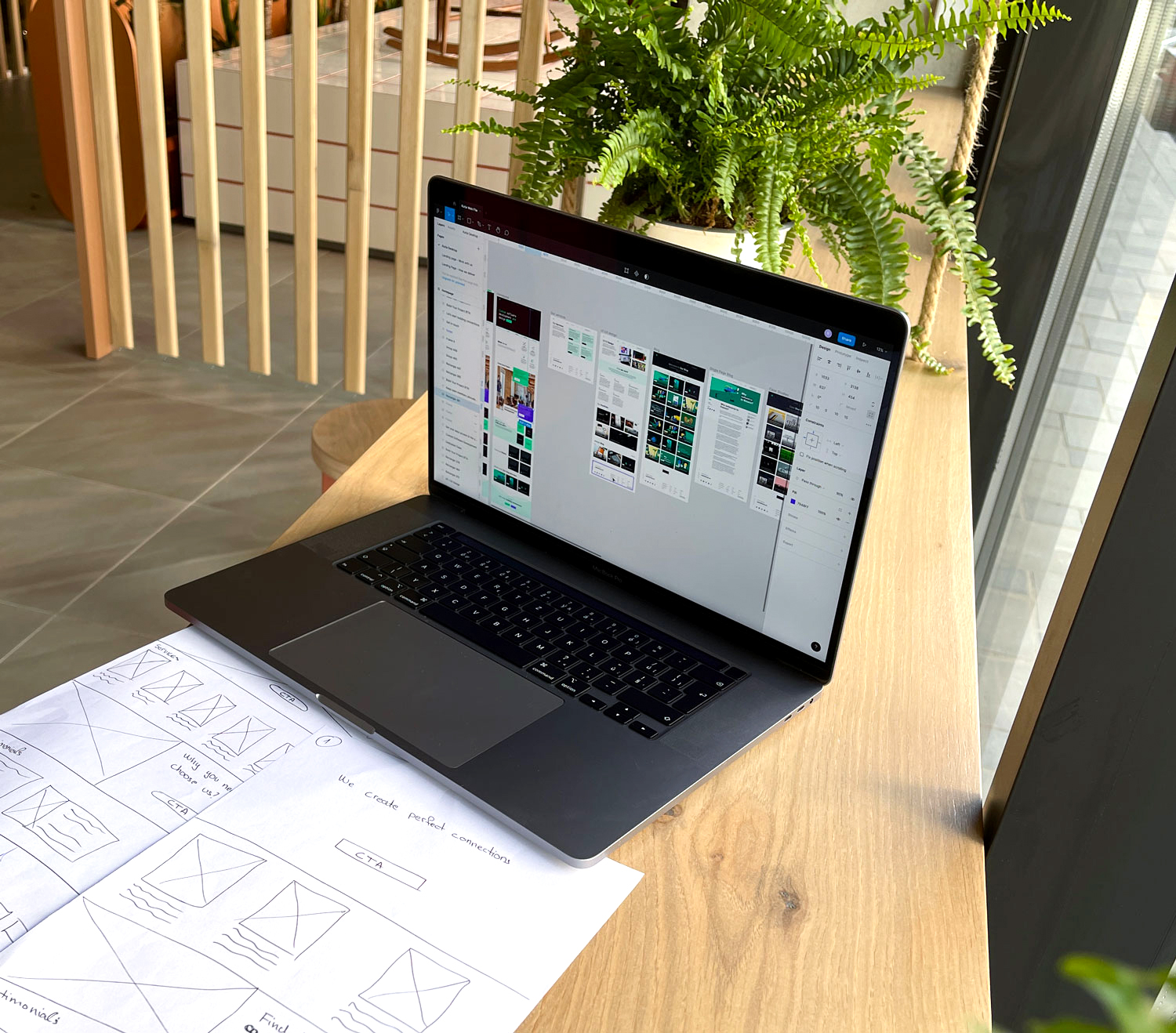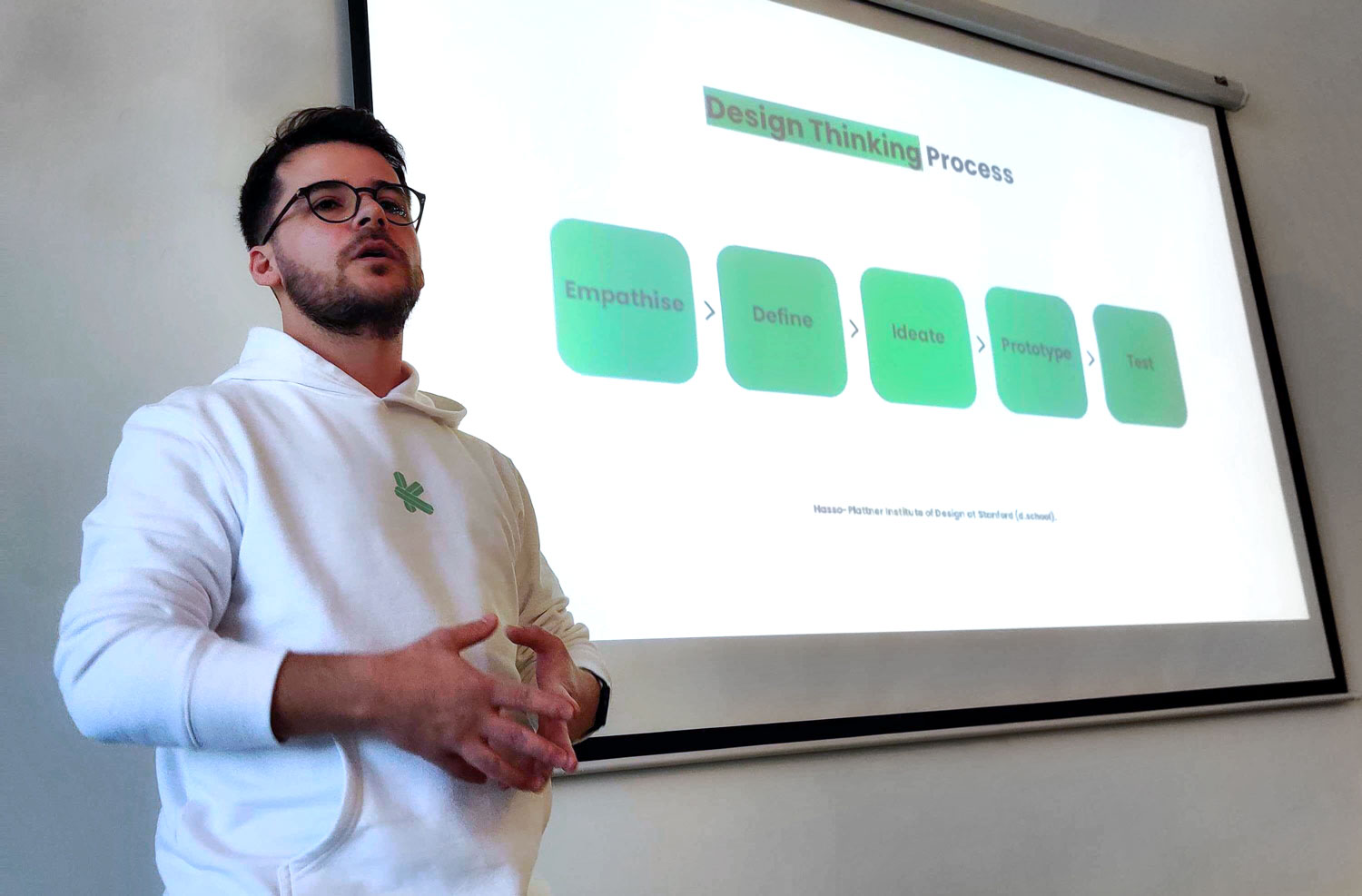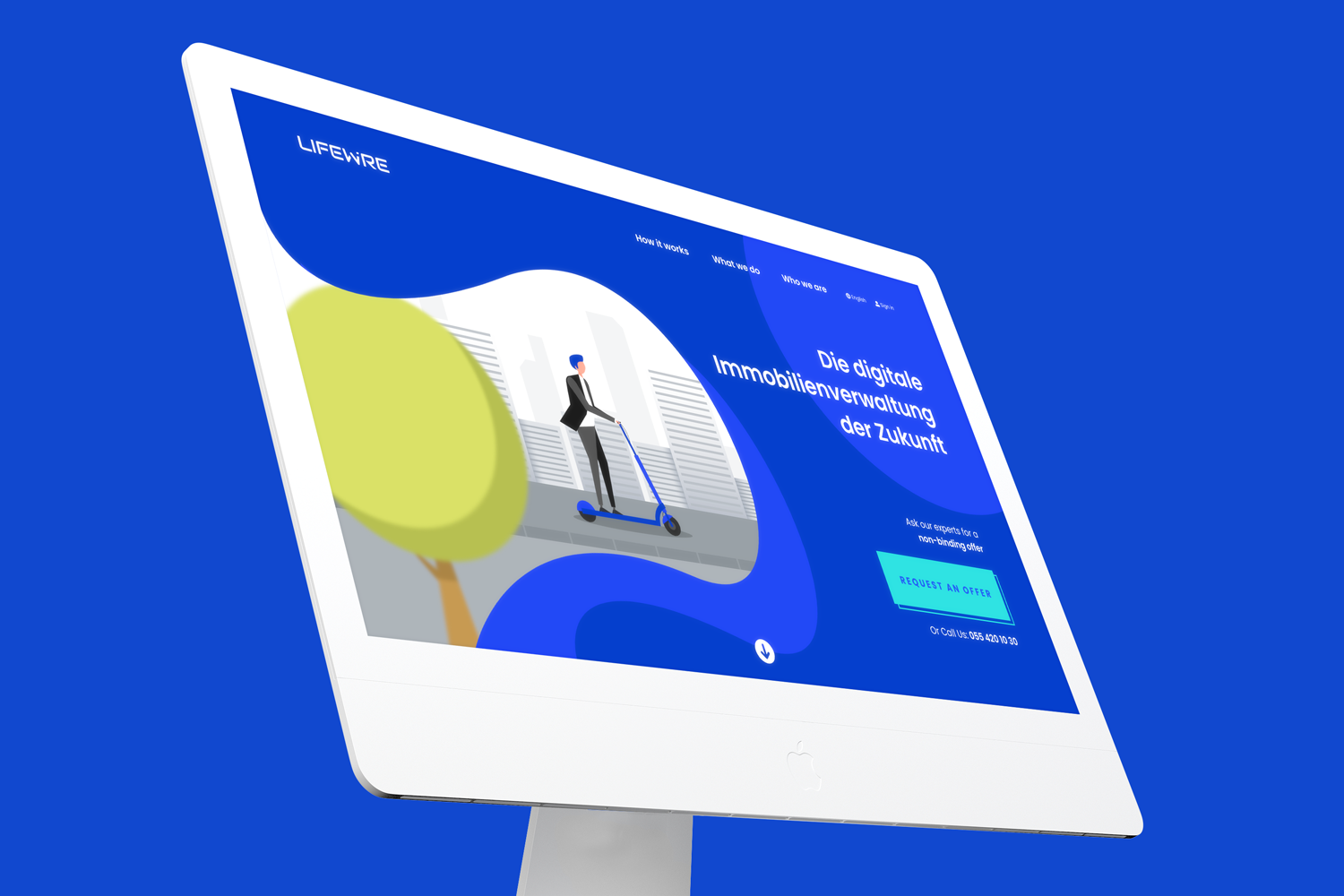01
Empathise
The first stage of the Design Thinking process is to gain an empathic understanding of the problem you are trying to solve. It allows design thinkers to set aside their own assumptions about the world in order to gain insight into users and their needs.
02
Define
This is where we analyse our observations and synthesise them in order to define the core problems that our team has identified up to this point. This stage helps us gather great ideas to establish features, functions, and any other elements that will allow us to solve problems or allow users to resolve issues themselves with the minimum of difficulty.
03
Ideate
This is where we start to "think outside the box" to identify new solutions to the problem statement we’ve created and look for alternative ways of viewing the problem. We are ready to generate new ideas!
The ideation stage in design thinking involves coming up with multiple solutions to problems. During this stage, it's important to brainstorm as many different ideas as possible and finally choose the one that will help us solve a problem or provide the elements required to circumvent it.
04
Prototype
This is an experimental phase, and the aim is to identify the best possible solution for each of the problems identified during the first three stages. By the end of this stage, we will have a better idea of the constraints inherent to the product and the problems that are present, and have a clearer view of how real users would behave, think, and feel when interacting with the end product.
05
Test
We rigorously test the complete product using the best solutions identified during the prototyping phase. This is the final stage but in an iterative process. The results generated during the testing phase are often used to redefine one or more problems and inform the understanding of the users, the conditions of use, how people think, behave, feel, and empathize.




